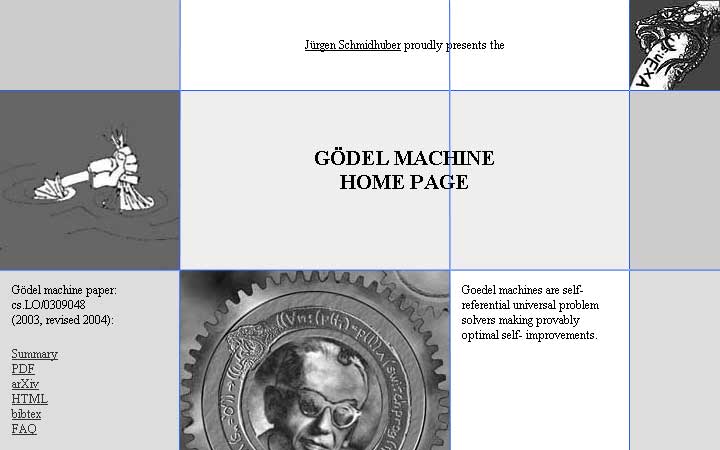







|
|
|
|
|
|
| Many of Prof. Schmidhuber's web pages and talk slides (e.g., this one) are graphically structured through Fibonacci ratios and the `golden' proportion. |
| Background: The ratios of subsequent Fibonacci numbers: 1/1, 1/2, 2/3, 3/5, 5/8, 8/13, 13/21, 21/34 ... converge to the harmonic proportion 0.5*(square root of 5 - 1) = 0.618034..., dividing the unit interval into segments of lengths a and b such that a/b=b. Many artists claim the human eye prefers this ratio over others. (Low-complexity art is based on a more general theory of beauty.) |
| Applications (below): Cut-outs of home and cogbotlab page. Blue lines indicate recursive applications of the harmonic proportion, approximated through Fibonacci ratios with a base length of 2 pixels. That is, we multiply Fibonacci numbers by 2 to obtain object sizes of 2, 4, 6, 10, 16, 26, 42, ..., 754 pixels. This yields a fine display width for many screens, while the "most desirable" base length of 1 pixel does not. |


